Lies, Dishonesty and Cheating
The Disputed Measurements of Miss France
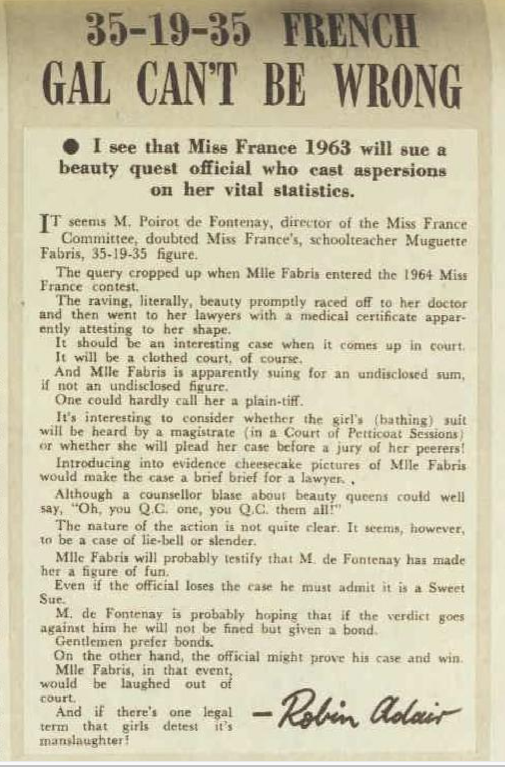
Article source.
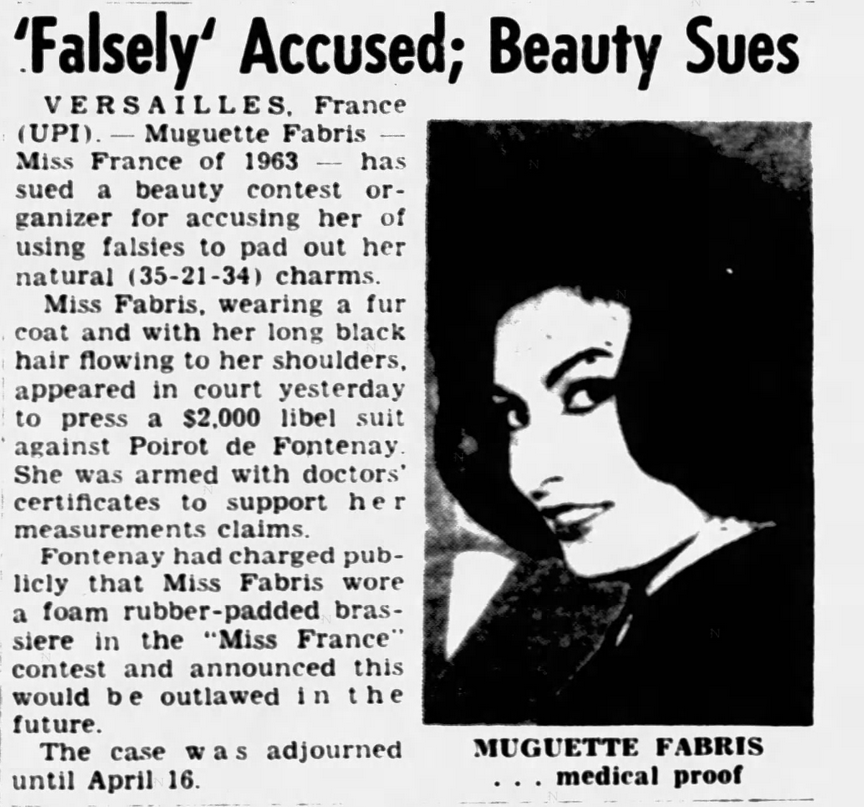
Article source: Philadelphia Daily News (Philadelphia, Pennsylvania) 07 Feb 1964, Fri Page 14
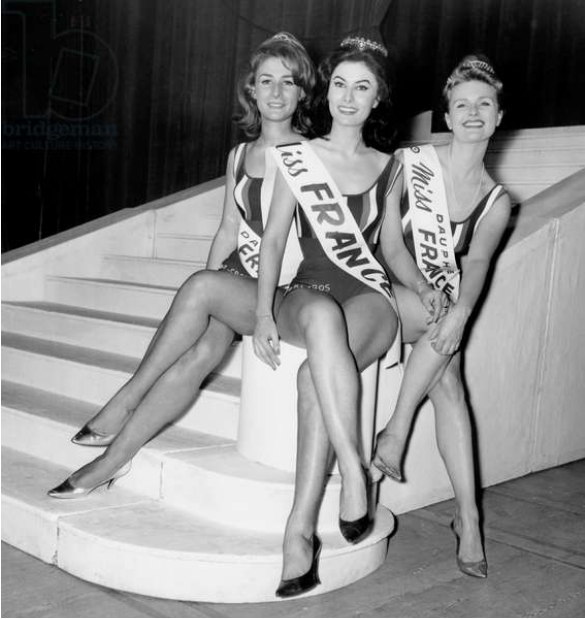
The New Miss France 1963 Muguette Fabris and her Dauphines Daniele Chevalier (L) and Michele Fourtain Povel (R) January 01, 1963
Posted By: Paul - Fri Jul 15, 2022 -
Comments (1)
Category: Awards, Prizes, Competitions and Contests, Beauty, Ugliness and Other Aesthetic Issues, Body, Lies, Dishonesty and Cheating, Lawsuits, 1960s
The Zone of Veracity
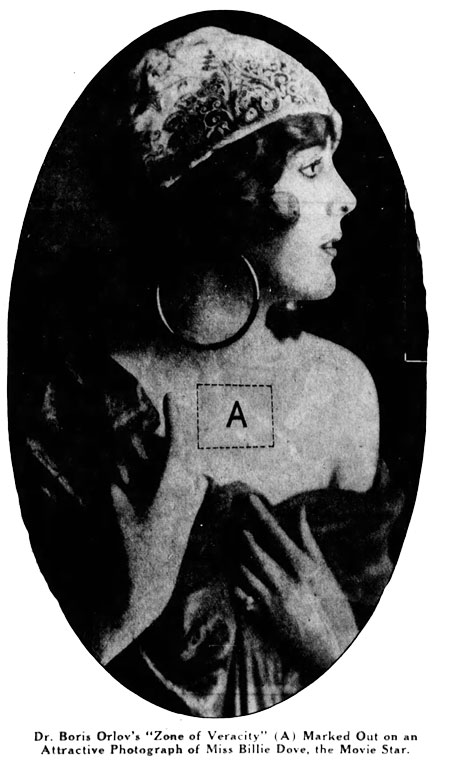
From the San Francisco Examiner - June 5, 1927:
The latest researches have been made known by Dr. Boris Orlov, a Russian psychologist, now living in Paris. Professor Orlov asserts that modern fashions, by exposing women’s necks, have incidentally exposed their minds. When a woman is not telling the truth, he insists, she will blush in the area just below the breast bone.
Dr. Orlov calls this telltale area the “zone of veracity,” and his book, “La Pseudologie Humaine Normale et Anormale,” offers a number of other interesting tips for the casual detection of untruthfulness. This “zone of veracity,” Dr. Orlov says, is a sort of window through which certain well-disguised feminine mental processes may be seen…
“When a woman lies,” Dr. Orlov continues, “there is inevitably a nervous tension inside her. During the mental stress of lying, this tension is communicated to the vasomotor nerves which control the arteries and capillaries in the skin.
“Blushing in any part of the body is produced by an increased flow of blood into the capillary vessels serving the parts where the blush extends. The area affected is not only reddened, but there is a perceptible increase of heat there.
“The interaction between mind and body is close. A nerve filament from the sympathetic system lies along the sheath of and parallel with each artery and capillary, controlling the expansion and contraction of the muscular coat of the vessel. This is the vasomotor nerve. The mental agitation produced by lying causes temporary vasomotor paralysis and an ensuing rush of blood into the capillary vessels of the skin, which we call blushing.
“A self-controlled deceiver can inhibit blushing in the face. But the feminine fibber’s throat, her upper thoracic area, will visibly palpitate and redden. A throbbing or fluttering will be seen in the area about the breast bone. The blushing will usually cover a space two to three inches in diameter. In many cases, this section of the throat or bosom will redden though not a trace of a blush will color the cheek.”
Posted By: Alex - Thu Jan 09, 2020 -
Comments (3)
Category: Lies, Dishonesty and Cheating, Psychology, 1920s
The Encyclopedia of Ethical Failure
This curious book, compiled and published by the U.S. Government, is a catalog of examples of ethical failure among federal employees. As explained in the intro:Some of the categories of ethical failure include Abuse of Position, Bribery, Conflicts of Interest, Credit-Card Abuse, Financial Disclosure Violations, Fraud, Gift Violations, Travel Violations, Misuse of Government Resources and Personnel, and Time and Attendance Violations.
You can download a word document of the entire book for free from the DoD. Or, you can buy a hard copy from Amazon.
It was last updated in 2015. Can't wait for the post-Trump era edition!

Posted By: Alex - Fri Jan 05, 2018 -
Comments (8)
Category: Lies, Dishonesty and Cheating, Politics, Books, Ethics and Morals
The Kabalarian Philosophy
Their page.
Their entry at THE SKEPTIC'S DICTIONARY lets us know: "Since the death of Mr. Parker in 1964, the Kabalarians, headquartered in Vancouver, B.C., have been led by Ivon Shearing who was sentenced to five years in prison in 1997 for sexually abusing several teenage girls over a twenty-five year period."
Posted By: Paul - Sun Mar 13, 2016 -
Comments (3)
Category: Frauds, Cons and Scams, Lies, Dishonesty and Cheating, Paranormal, Religion, Myths and Fairytales, 1930s
The Infidelity Phone

This makes the phone perfect for philanderers, and has earned it the nickname "uwaki keitai" or "infidelity phone." Apparently no other phones offer such robust privacy features. For which reason, people are sticking with their old flip phones rather than upgrading to new models.
I can see a flaw in their strategy. Now that the phone is known as the phone-of-choice of philanderers, having one is a sign of what you are.
Posted By: Alex - Tue Jan 29, 2013 -
Comments (3)
Category: Lies, Dishonesty and Cheating, Technology, Telephones
The Husband Detector
Dr. Gordon Volkenant seems like he was quite the character. In 1947, he invented a gadget he called the "husband detector." It was basically a motion detector, designed to help wives catch their husbands who were trying to sneak unheard into the house after a late night at the bar. When it sensed someone coming through the door, it set off a loud siren. link: Pittsburgh Press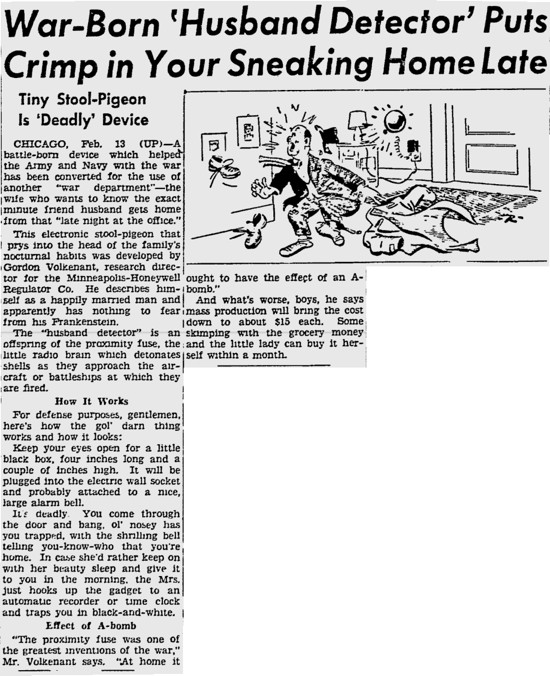
Volkenant promptly became the first husband to be caught by his own device, when it rang the alarm as he tried to sneak into his house at 3 a.m. link: Washington Reporter
And based on the look of him, I'm guessing he wasn't just at the bar until 3 a.m. Here he is in 1948 demonstrating another of his gadgets, which he called an "electronic humidistat." He claimed it could detect hosiery defects in nylon stockings when he waved it up and down a woman's leg. It looks a lot like a regular lightbulb to me. I'm sure he found it necessary to test on many women.
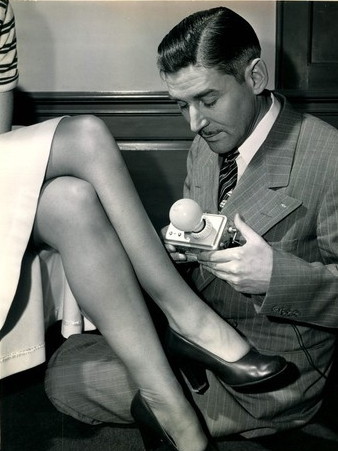
Posted By: Alex - Wed Apr 25, 2012 -
Comments (7)
Category: Inventions, Lies, Dishonesty and Cheating, Husbands
Cremo and Spit-tipped Cigars
We all know that ad campaigns have often created the disease or deficiency they wish to sell remedies for. "Halitosis" and "BO" were Madison Avenue inventions.But perhaps no campaign dared quite as much as that for Cremo cigars, with its charge that all its competitors spit on their product.
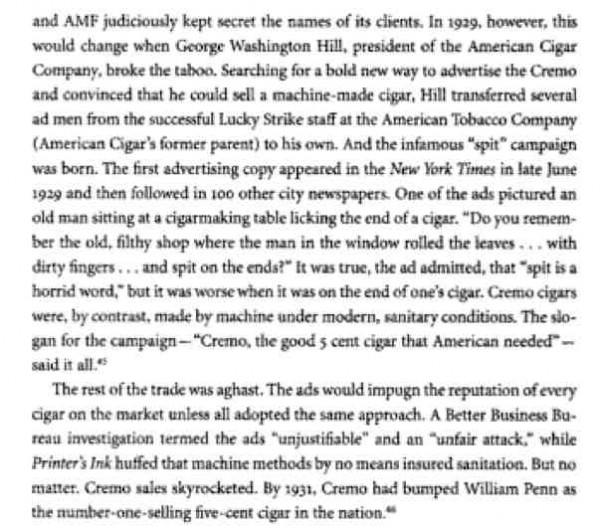
Original text here.
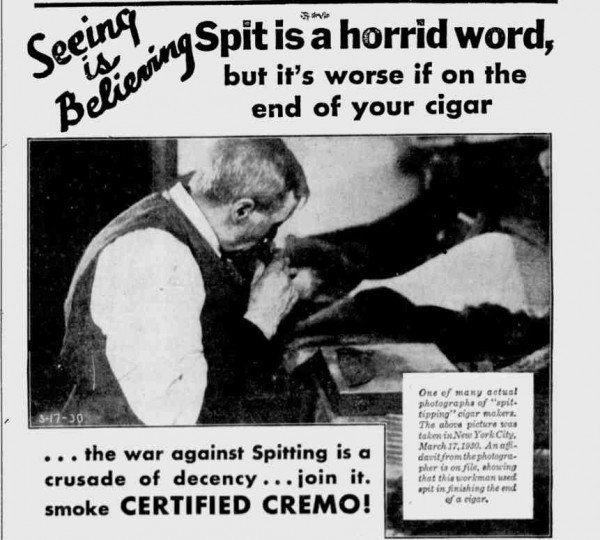
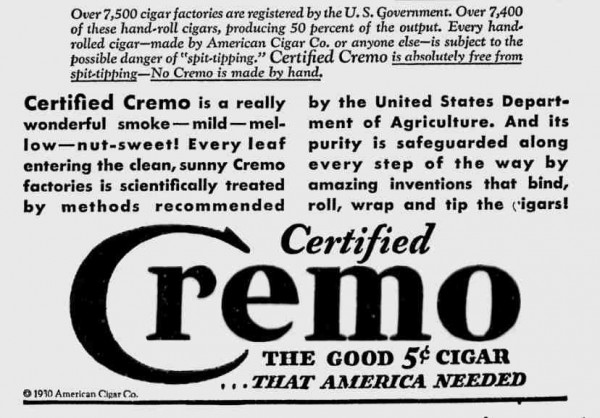
Original ad here. (Scroll down.)
But although Cremo increased its market share, their scheme ultimately backfired.
As this history says:
During the 1920s, the cigar industry began to suffer from image problems. The rise of organized crime during Prohibition, and the image of the stogie-chomping gangster--developed in part by Hollywood, and personified by such actors as Edward G. Robinson--gave the cigar an aura of disrespect among the public. Later that decade, the cigar industry faced a second crisis, when American Tobacco began promoting new, machine-rolled cigars. Its advertising asked: "Why run the risk of cigars made by dirty yellowed fingers and tipped in spit?" The image proved disastrous for the cigar industry as a whole. Cigar makers rushed to convert their manufacturing from hand-rolled to machine-rolled products, but cigar sales plunged through the 1930s. During this same time period, the cigar industry was hit hard by the rise in cigarette use across the United States. Cigar consumption never recovered to its early 1920s peak.
Posted By: Paul - Wed Apr 18, 2012 -
Comments (5)
Category: Business, Advertising, Products, Lies, Dishonesty and Cheating, Smoking and Tobacco, 1920s, 1930s
Cheating
Obviously, Bernie Madoff and too many other prominent figures were never exposed to this video in their youth
Posted By: Paul - Sat Oct 24, 2009 -
Comments (3)
Category: Education, Family, Juvenile Delinquency, Teenagers, Lies, Dishonesty and Cheating, Documentaries, 1950s

| Who We Are |
|---|
| Alex Boese Alex is the creator and curator of the Museum of Hoaxes. He's also the author of various weird, non-fiction, science-themed books such as Elephants on Acid and Psychedelic Apes. Paul Di Filippo Paul has been paid to put weird ideas into fictional form for over thirty years, in his career as a noted science fiction writer. He has recently begun blogging on many curious topics with three fellow writers at The Inferior 4+1. Contact Us |




